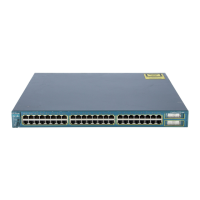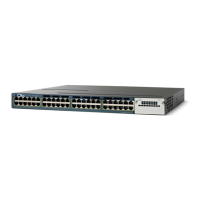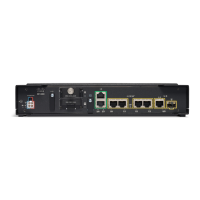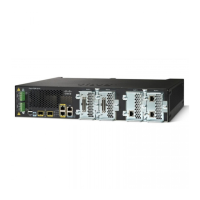Contents
xxiii
Catalyst 3550 Multilayer Switch Software Configuration Guide
78-11194-09
Standard QoS Configuration Guidelines 29-26
Enabling QoS Globally 29-28
Configuring Classification By Using Port Trust States 29-29
Configuring the Trust State on Ports within the QoS Domain 29-29
Configuring the CoS Value for an Interface 29-31
Configuring a Trusted Boundary to Ensure Port Security 29-32
Enabling Pass-Through Mode 29-33
Configuring the DSCP Trust State on a Port Bordering Another QoS Domain 29-34
Configuring a QoS Policy 29-35
Classifying Traffic by Using ACLs 29-36
Classifying Traffic on a Physical-Port Basis by Using Class Maps 29-39
Classifying Traffic on a Per-Port Per-VLAN Basis by Using Class Maps 29-41
Classifying, Policing, and Marking Traffic by Using Policy Maps 29-43
Classifying, Policing, and Marking Traffic by Using Aggregate Policers 29-49
Configuring DSCP Maps 29-51
Configuring the CoS-to-DSCP Map 29-52
Configuring the IP-Precedence-to-DSCP Map 29-52
Configuring the Policed-DSCP Map 29-53
Configuring the DSCP-to-CoS Map 29-54
Configuring the DSCP-to-DSCP-Mutation Map 29-55
Configuring Egress Queues on Gigabit-Capable Ethernet Ports 29-57
Mapping CoS Values to Select Egress Queues 29-57
Configuring the Egress Queue Size Ratios 29-58
Configuring Tail-Drop Threshold Percentages 29-59
Configuring WRED Drop Thresholds Percentages 29-61
Configuring the Egress Expedite Queue 29-62
Allocating Bandwidth among Egress Queues 29-63
Configuring Egress Queues on 10/100 Ethernet Ports 29-64
Mapping CoS Values to Select Egress Queues 29-64
Configuring the Minimum-Reserve Levels 29-65
Configuring the Egress Expedite Queue 29-66
Allocating Bandwidth among Egress Queues 29-67
Displaying Standard QoS Information 29-69
Standard QoS Configuration Examples 29-69
QoS Configuration for the Existing Wiring Closet 29-70
QoS Configuration for the Intelligent Wiring Closet 29-71
QoS Configuration for the Distribution Layer 29-72

